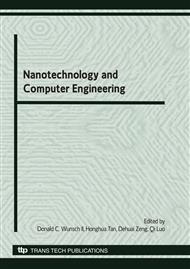p.399
p.405
p.411
p.417
p.423
p.429
p.435
p.441
p.447
Attack Algorithm on Watermarking with Public Watermark Detection
Abstract:
This paper proposes an attack algorithm for digital image watermarking based on independent component analysis (ICA). The paper gives a briefly introduction about ICA algorithm, and expatiates on the attack algorithm which we proposed. The algorithm uses an auxiliary image to remove the watermark signal from the host image based on blind signal separation technology. The paper also does some experiment to attack the watermark algorithm proposed by I J. Cox. The results show that this attack algorithm not only removes most of the digital watermark information, but also has little effect on the image’s peak signal to noise ratio. The paper also discusses the attack algorithm for different watermark signals and different auxiliary images; the effect of this attack algorithm is feasible.
Info:
Periodical:
Pages:
423-428
Citation:
Online since:
June 2010
Authors:
Price:
Сopyright:
© 2010 Trans Tech Publications Ltd. All Rights Reserved
Share:
Citation:


